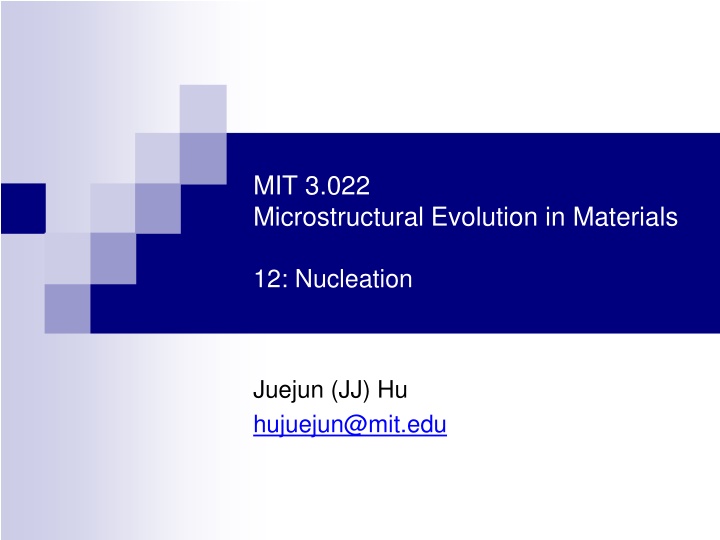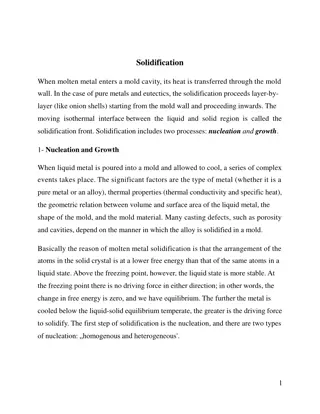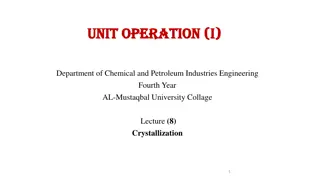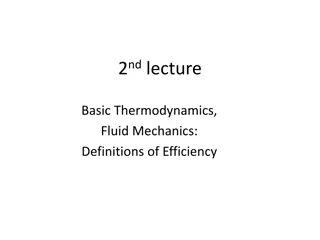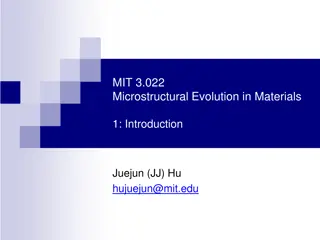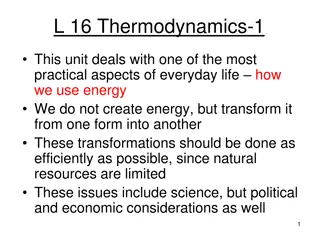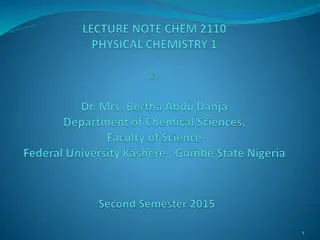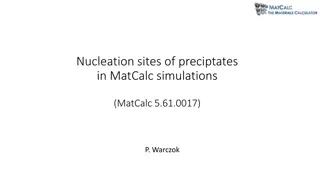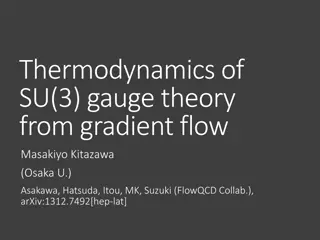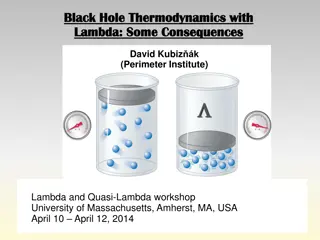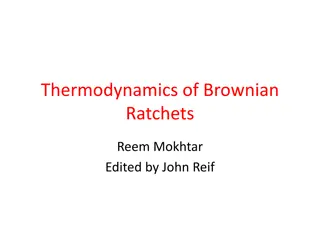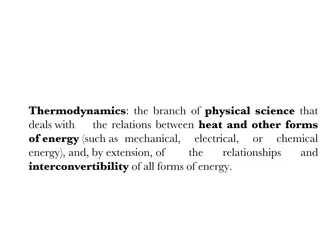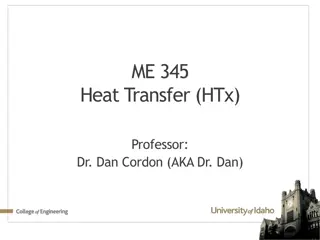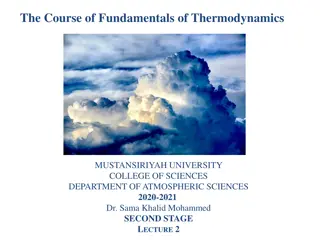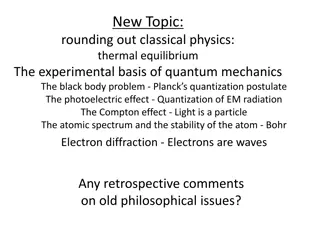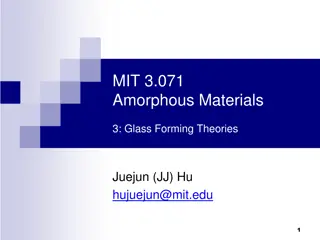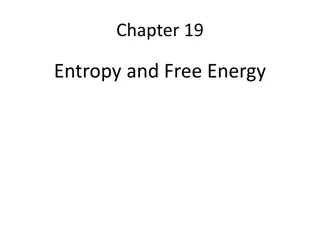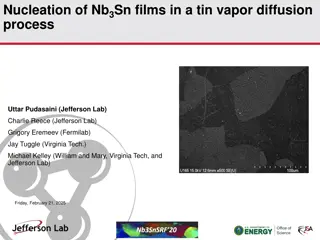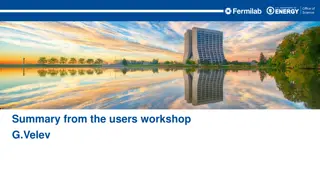Microstructural Evolution in Materials: Nucleation and Thermodynamics
This content explores the microstructural evolution in materials focusing on nucleation phenomena and the thermodynamics of phase transitions. Topics include homogeneous nucleation, Gibbs free energy changes, critical nuclei density, nucleation rates, and vapor-liquid nucleation. Insights into the process of nucleation in materials science are discussed, along with examples and critical thresholds for nucleation onset.
Download Presentation

Please find below an Image/Link to download the presentation.
The content on the website is provided AS IS for your information and personal use only. It may not be sold, licensed, or shared on other websites without obtaining consent from the author.If you encounter any issues during the download, it is possible that the publisher has removed the file from their server.
You are allowed to download the files provided on this website for personal or commercial use, subject to the condition that they are used lawfully. All files are the property of their respective owners.
The content on the website is provided AS IS for your information and personal use only. It may not be sold, licensed, or shared on other websites without obtaining consent from the author.
E N D
Presentation Transcript
MIT 3.022 Microstructural Evolution in Materials 12: Nucleation Juejun (JJ) Hu hujuejun@mit.edu
Thermodynamics of phase transition G H = L L L Liquid G H TS Supercooled liquid Liquid = C C C G H TS Crystal Crystal Tm Tm T T
Homogeneous nucleation from a fluid phase Liquid Crystal nucleus r = + G G G V S Volumetric Surface
Thermodynamics of homogeneous nucleation G Volumetric Gibbs free energy change ( V T G = = L L L Liquid G H TS ) ( H T ) G L C T S S V m = C C C G H TS V ( ) = m T T m Crystal m 3 4 H T r = m T 3 m Surface energy change = = 2 4 G S r S T Tm
Gibbs free energy change in solidification Gibbs free energy change of nucleation 2 G r Gibbs free energy change S 3 4 H T r = + 4 2 m G r 3 T G * m Critical nucleus size 2 H T = * m r T m Energy barrier towards nucleation 3 G r V H 3 2 16 T = * m G 2 m 2 3 T Nucleus size r
Seeing nucleation using atomic tomography https://www.nature.com/articles/s41586-019-1317-x
Density of critical nuclei Number of clusters with size greater than r kT 3 4 H T r G = + 4 = 0exp n 2 m where G r n r 3 T m Example: number of ice clusters in 1 g of water at 0 C = 0.033 J/m2, Hm = 333.6 J/g, Tm = 273.15 K r > 0.4 nm (~ 9 molecules): 1.3 1015 r > 0.7 nm (~ 48 molecules): 0.7 A supercooling threshold exists for onset of nucleation events
Homogeneous nucleation rate Nucleation rate I = Number of nuclei with size just under r* Rate of atoms hopping to the nuclei I exp * G 6 n D * G 0 exp I n kT 2 0 h kT G 2 * 1 G T + * kT E = 0 n exp a 1 6 Nucleation onset = 2 Q D h T 6 * n D G kT I 0 exp 2 0 Driving force limited Diffusion limited
Experimental measurement of nucleation rate Liquid Nucleation Growth Nucleation rate in lithium silicate glass Nucleation zone T Tm Nucleation zone t Adapted from Phys. Chem. Glasses 15, 95 (1974)
Heterogeneous nucleation Gibbs free energy change of cluster formation LC Liquid Cluster Volumetric term SL SC H T = m G T V V C Substrate m = + cos Surface term Y-L equation: SL SC LC = + G S S S S LC LC SC SC S L S L 3 4 H T r ( ) = + = + 2 4 m G G G r S het V S LC 3 T m 12 cos 4 ( ) ( ) ( )( ) 2 = = + 1 cos G G S 1 S het homo
Heterogeneous nucleation Gibbs free energy change of cluster formation Volumetric term H T = m G T V V C m Surface term = + G S S S S LC LC SC SC S L S L 3 4 H T r ( ) = + = + 2 4 m G G G r S het V S LC 3 T m 12 cos 4 ( ) ( ) ( )( ) 2 = = + 1 cos G G S 1 S het homo
Heterogeneous nucleation Critical nucleus size 2 = m H T Gibbs free energy change = * het r * m homo r T Energy barrier towards nucleation = het G * r H 3 LC 2 16 T ( ) * m T S 2 m 2 3 Wetting on a substrate reduces energy barrier towards nucleation Nucleus size r
Nucleation kinetics and grain size Magnesium alloy w/o SiC particles Magnesium alloy with SiC particles Fast cooling and addition of secondary phase contribute to grain refinement Acta Mater.54, 5591 (2006)
Vapor-Liquid-Solid (VLS) nanowire growth Interface where growth continues SiCl4 vapor + H2 Growth direction Melted gold nanoparticles saturated with SiH4 Substrate Substrate Heterogeneous nucleation of Si at the interface Diameter of nanowire is determined by the gold droplet size Temperature for Si deposition on a planar substrate (homogeneous nucleation): ~ 800 C
Nanowires formed by VLS growth Gold nano- particle Growth direction S. Kodambaka, J. Tersoff, M. C. Reuter, and F. M. Ross, Science316, 729 (2007).
Why gold? Reason #1: Low eutectic temperature Question: what would happen if we were to grow nanowires at high temperature? The influence of the surface migration of gold on the growth of silicon nanowires, Nature440, 69-71 (2006).
Why gold? Reason #2: Small gold solubility in Si (Eutectoid transformation) Question: why is such small solubility important? 99.8% Solubility: 0.2% Albert P. Levitt, Whisker Technology (1975)
Summary Driving force for nucleation Supercooling (undercooling) Volumetric Gibbs free energy reduction Energy barrier against nucleation Surface energy Kinetics of nucleation Number of sub-critical nuclei Diffusion Heterogeneous nucleation Lowering the surface energy barrier of nucleation
List of symbols T temperature k Boltzmann constant (1.38 10-23m2kg s-2K-1) GL / HL / SL Gibbs free energy / enthalpy / entropy of liquid GC / HC / SC Gibbs free energy / enthalpy / entropy of crystalline solid Tm melting point G Gibbs free energy change associated with phase transition GV / GS volumetric / surface contributions to Gibbs free energy change of phase transition r radius of nucleus
List of symbols Hm enthalpy of fusion per unit volume V volume of nucleus T supercooling, defined as: surface/interface energy T T m S surface area of nucleus r* critical nucleus size G* energy barrier towards nucleation nr number of clusters with size greater than r n0 number of atoms/molecules in the system (see discussions at the notes section of slide 7) I nucleation rate
List of symbols h frequency of successful atomic hops from liquid phase to the nucleus vibrational frequency of atoms in the liquid phase D diffusion coefficient (from liquid phase to the nucleus) atomic hopping distance VC volume of cluster (which serves as a nucleus in heterogenous nucleation process) SL / SC / LC interface energy between S: substrate, C: cluster, and L: liquid phase contact angle ( ) 1 4 2 cos S = ( ) S ( )( ) 2 defined as: + 1 cos
List of symbols Ghet / Ghomo Gibbs free energy change associated with heterogeneous / homogeneous nucleation / het homo r r * * critical nucleus size in heterogeneous / homogeneous nucleation energy barrier towards heterogeneous nucleation het G *
